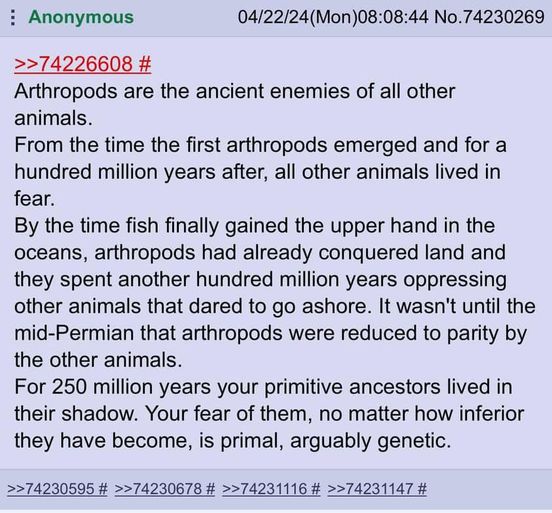Just to put some context:
- Predatory scorpions a couple feet long
- Armored millipedes larger than a man; they were probably herbivorous but as the article notes they "would have had few, if any, predators."
- There is a theory, possibly not real well accepted but it makes sense to me, that trilobites were the creature that way-back-when invented effective predation shortly after evolving vision. (Before which the world was a fairly benign place.) The theory further supposes that the Cambrian Explosion was caused by every other organism on the planet having to scramble not to have their soft blobby flesh munched on at leisure by a limitless army of armored, invulnerable hunters, which they couldn't see or avoid, but who could see and follow them.




